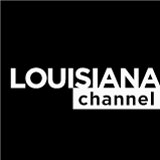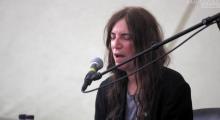People
Video Type
In this video architect Liz Diller talks about the New York park ‘The High Line’, a project that she has been part of from the beginning, and which proves “the hypothesis that a really strong public amenity can actually change the economics of a whole area.”
The High Line was a ruin sitting since 1980, where a “very strange landscape had formed, with a whole eco system around it.” All the airborne seed, seeds from the train containers, had self seeded and created this other worldliness of perverse urban nature, Liz Diller explains.
New yorkers are always doing something, but in this unfamiliar environment you have to let go, says Liz Diller. Instead you are left with the things you were not supposed to see, the unintended things, which are not really understandable.
Part of the beauty of the park is that it came out of sheer naivety, adds Diller: “It’s good to have a little bit of knowledge and not too much.” The High Line project couldn’t have happened without the right people, the right time and the right administration.
Liz Diller is one of the three partners of Diller Scofidio + Renfro, an interdisciplinary design studio based in New York City. Diller is a Professor of Architecture at Princeton University and a former graduate from the Cooper Union School of Architecture.
The High Line is a 1-mile (1.6 km) park in New York City built on a section of the elevated former railroad spur running along the lower west side of Manhattan. The design of The High Line park is a collaboration between James Corner Field Operations, Diller Scofidio + Renfro, and planting designer Piet Oudolf. The first part opened to the public in 2009.
The High Line railroad opened in 1934. Designed to go through the center of blocks, rather than over the avenue, it allowed trains to roll right inside buildings and connect directly to factories and warehouses. The last delivery, of three carloads of frozen turkeys, was made in 1980.
In 1999, the non-profit Friends of the High Line was formed by two residents of the local neighborhood, who advocated for the Line's preservation and reuse as public open space, an elevated park or greenway, similar to the Promenade Plantée in Paris (completed in 1993).
In 2001, photographer Joel Sternfeld published the book "Walking the High Line" which documented the dilapidated conditions and the natural flora of the High Line between 2000 and 2001.
Liz Diller was interviewed by Jesper Bundgaard
Camera and edit: Per Henriksen
Music by: P. Tiehuis and T.Monk
Produced by: Christian Lund
Copyright: Louisiana Channel, Louisiana Museum of Modern Art, 2014
Supported by Nordea-fonden
_____
Photographs shown:
Joel Sternfeld
A Peach Tree, October 2000
Print: 2012
Digital C-print
39 1/2 X 50 inches
(100.33 X 127 cm)
Joel Sternfeld
A View with the Empire State Building, November 2000
Negative: 2000; Print: 2009
Digital C-print
39 1/2 X 50 inches
(100.33 X 127 cm)
Joel Sternfeld
Looking East on 30th Street on a Late September Morning, 2000
2000
Digital C-print
39 1/2 X 50 inches
(100.33 X 127 cm)
Joel Sternfeld
Looking East on 30th Street on a Monday Morning in May
2000
Digital C-print
39 1/2 X 50 inches
(100.33 X 127 cm)
Joel Sternfeld
Looking Northwest from 29th Street, June 2000
Negative: 2000; Print: 2009
Digital C-print
39 1/2 X 50 inches
(100.33 X 127 cm)
Joel Sternfeld
Looking South at 27th Street, September 2000
Negative: 2000; Print: 2009
Digital C-print
39 1/2 X 50 inches
(100.33 X 127 cm)
Joel Sternfeld
Looking South on a May Evening (the Starrett-Lehigh Building), May 2000
Negative: 2000; Print: 2009
Digital C-print
39 1/2 X 50 inches
(100.33 X 127 cm)
Joel Sternfeld
Looking South on an Afternoon in June, 2000
Negative: 2000; Print: 2009
Digital C-print
39 1/2 X 50 inches
(100.33 X 127 cm)
Joel Sternfeld
Grape Hyacinth, April 2000
Digital C-print
39 1/2 X 50 inches
(100.33 X 127 cm)
Comments
Brought to you by LOUISIANA






